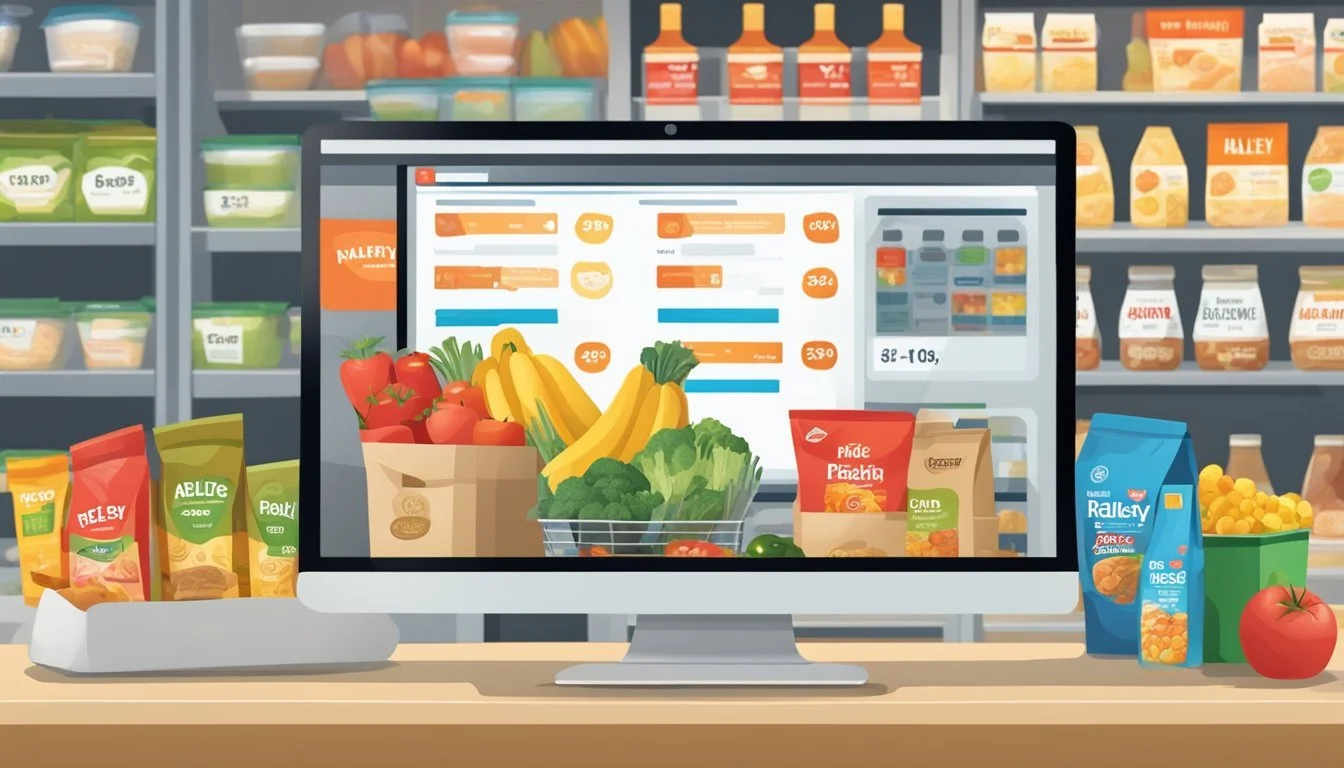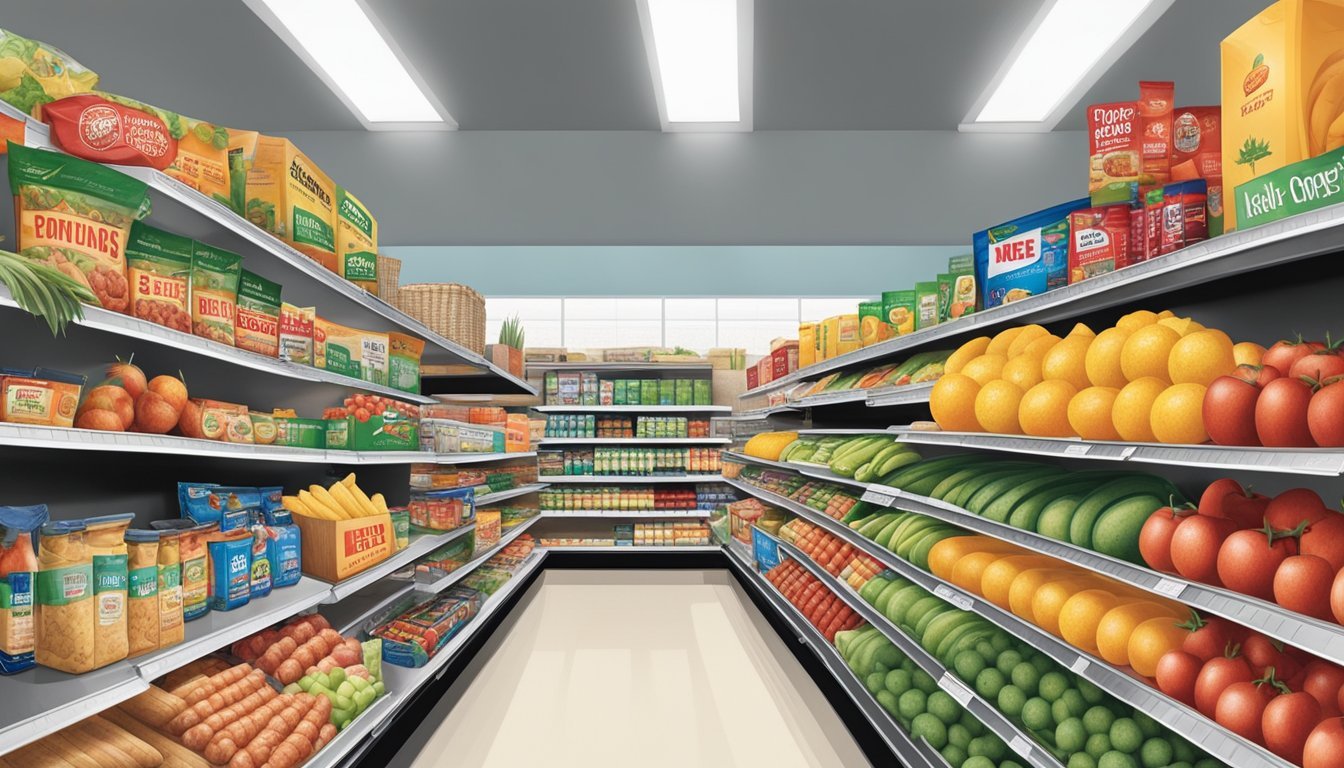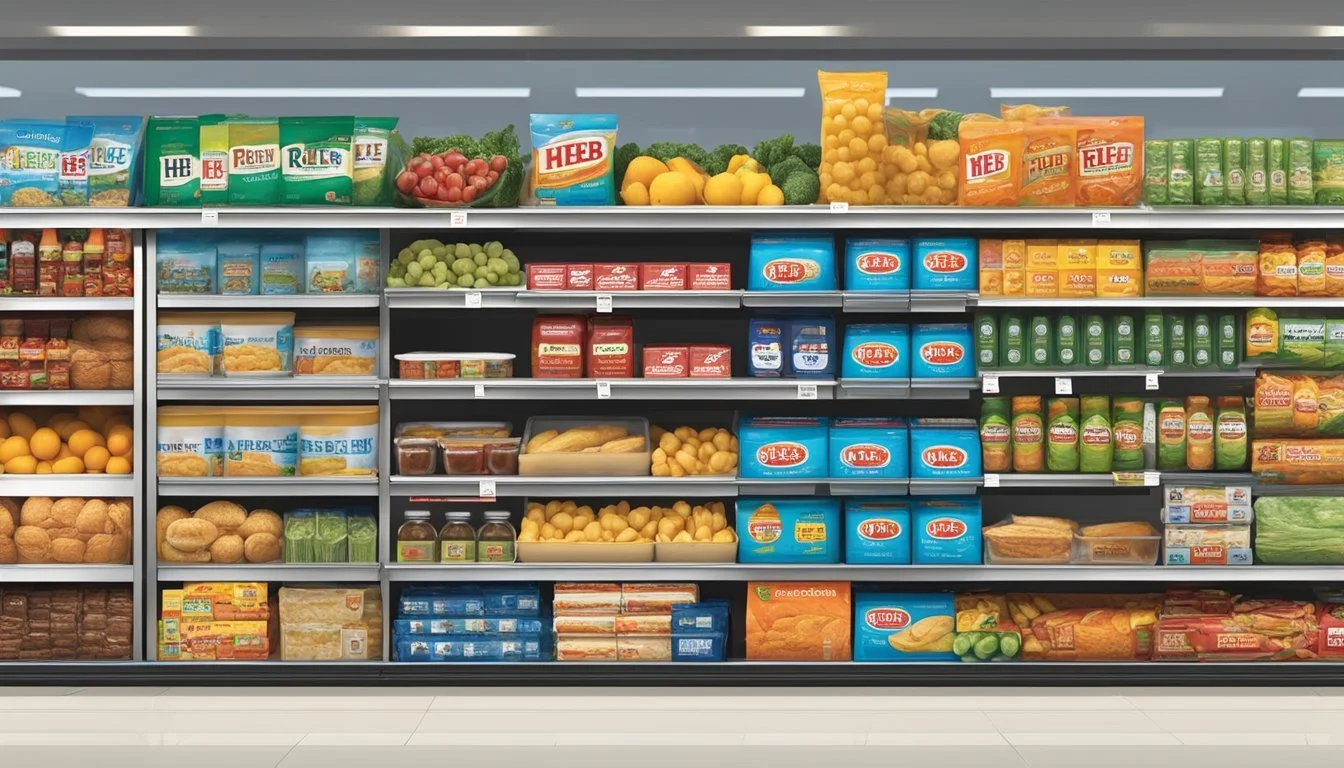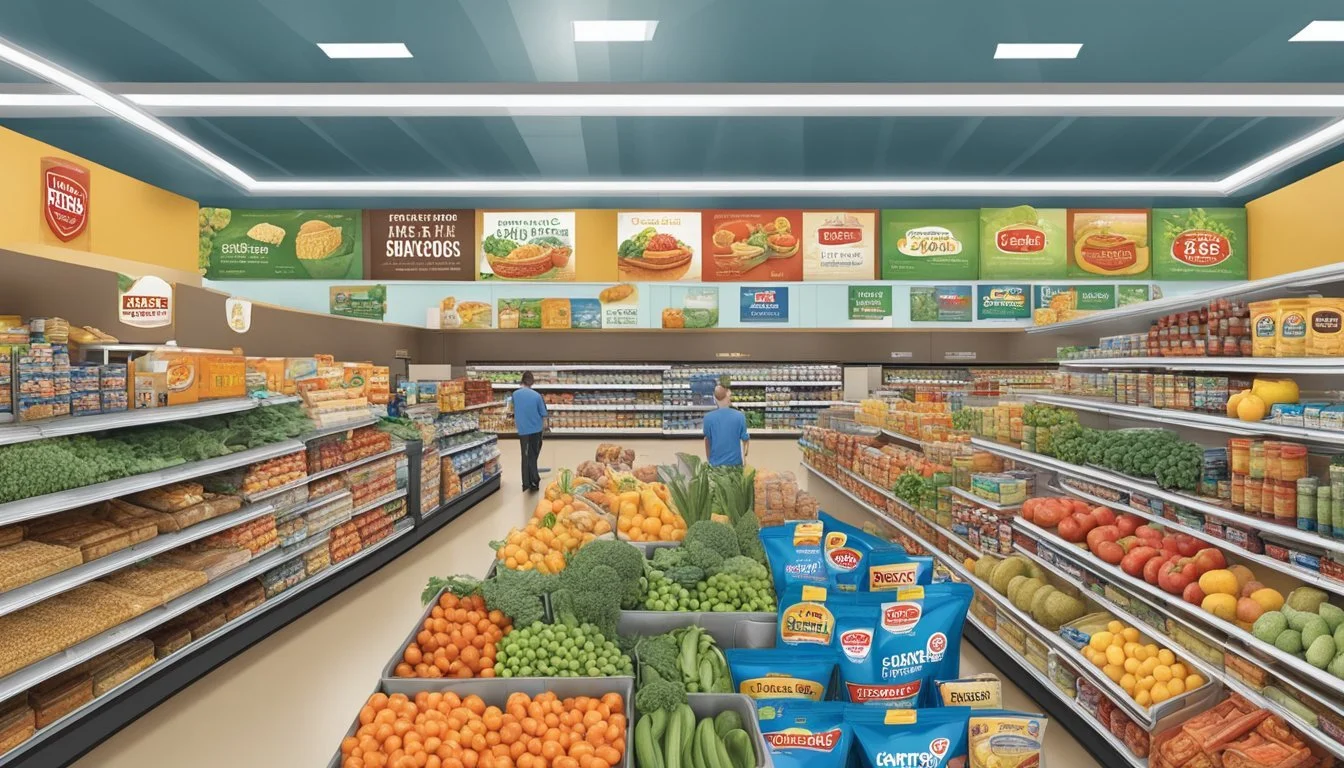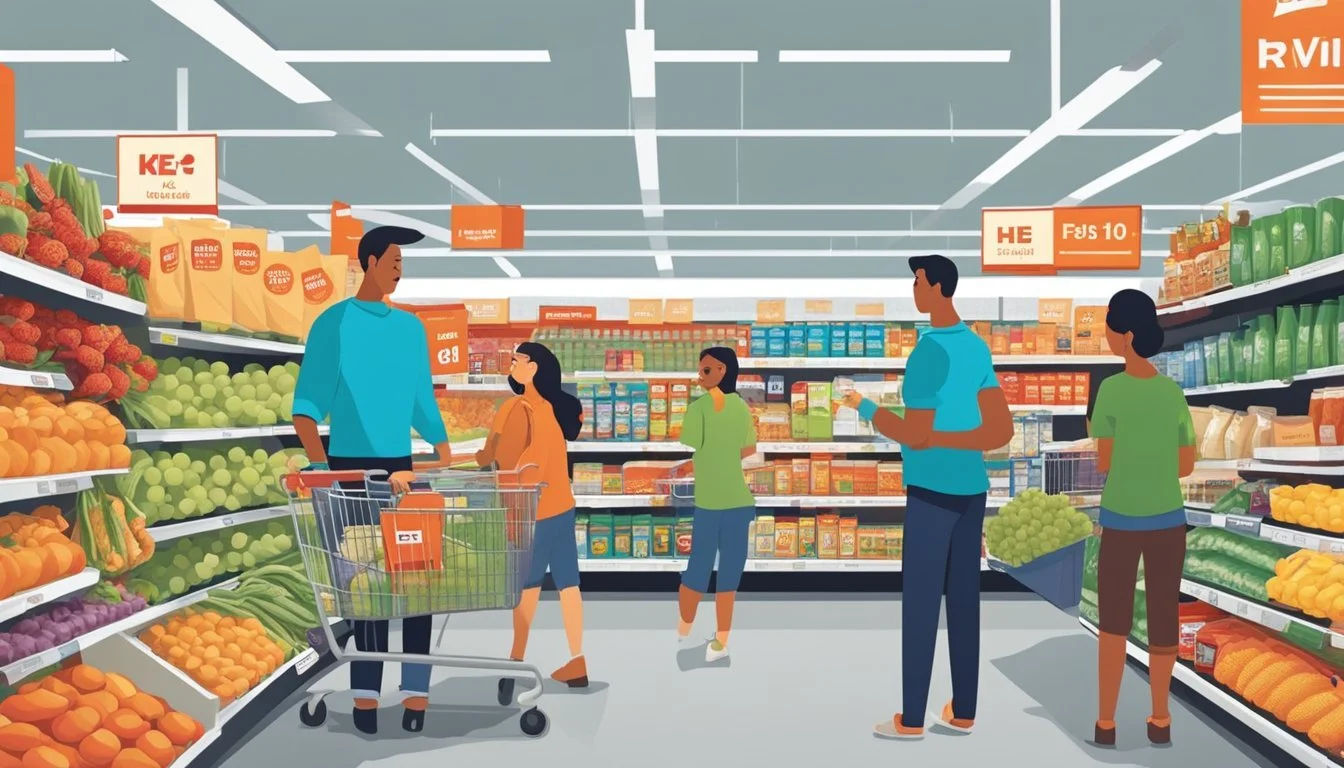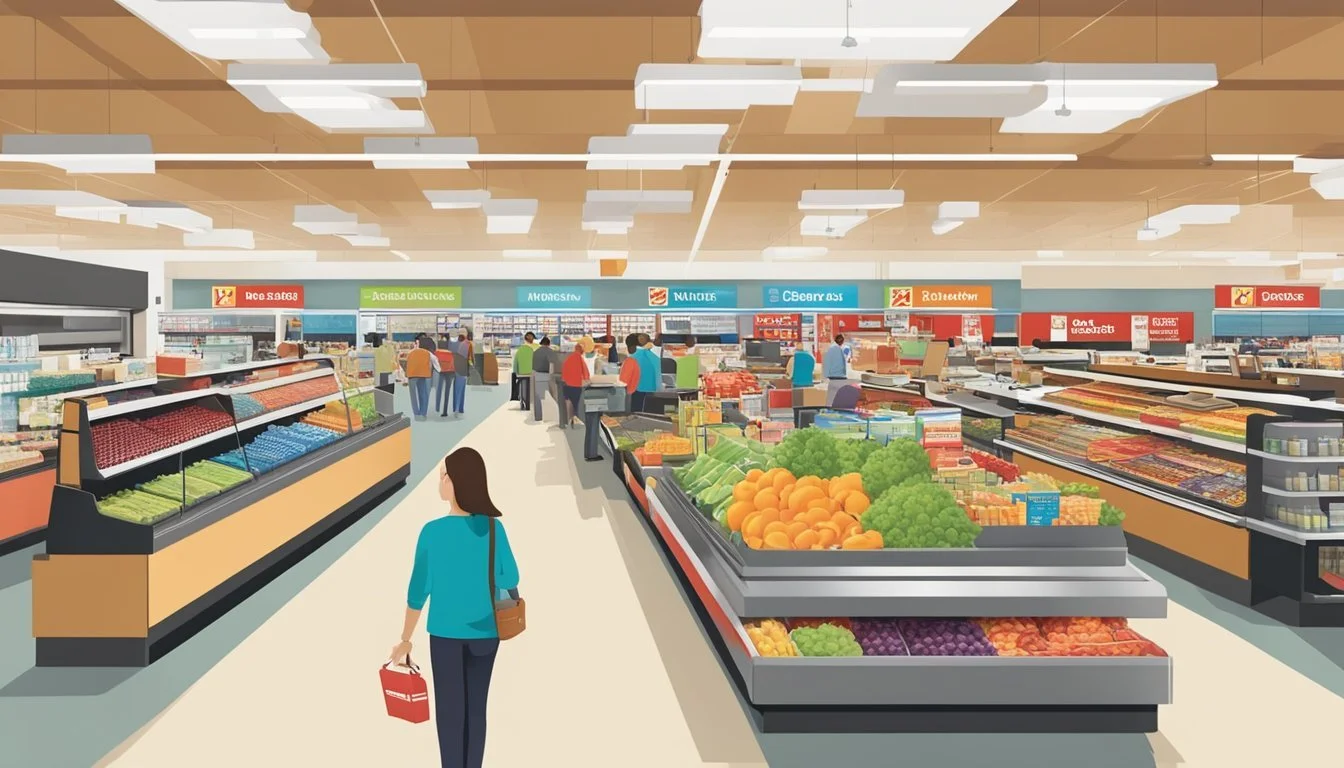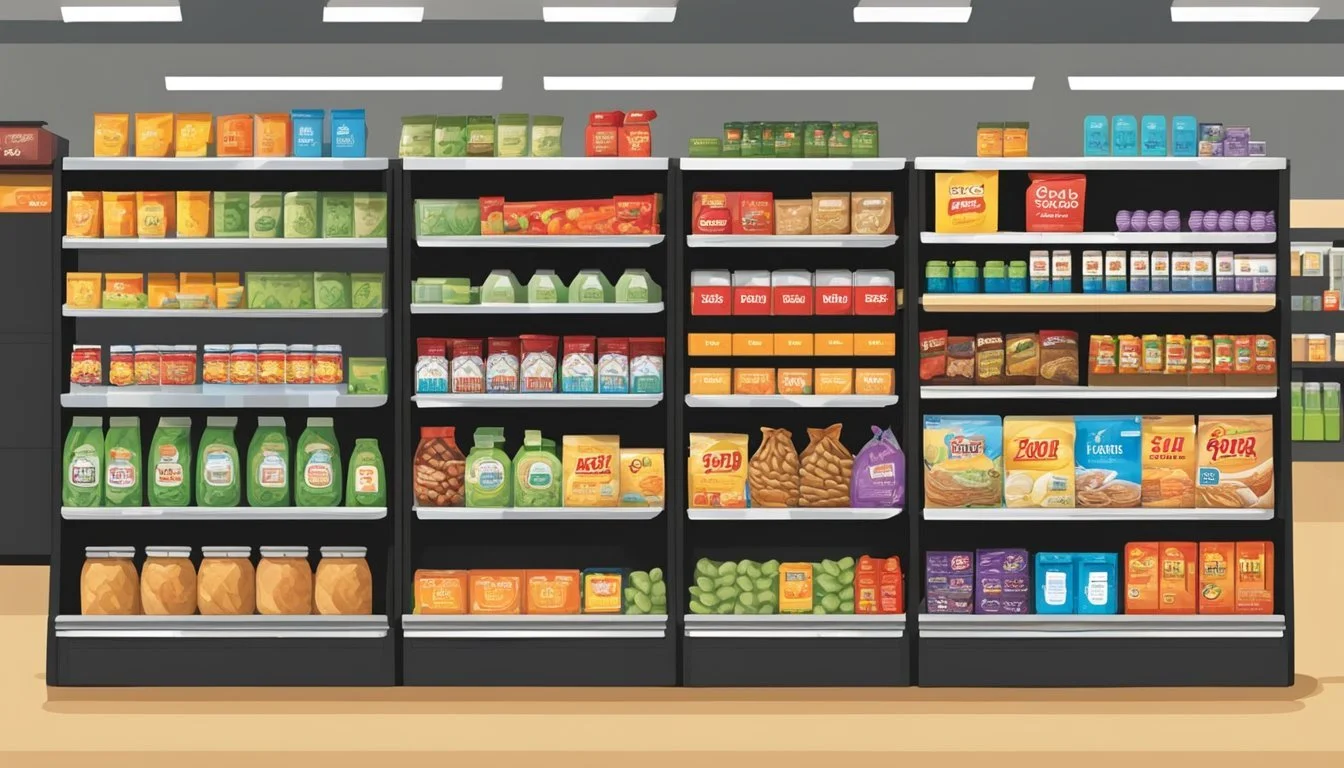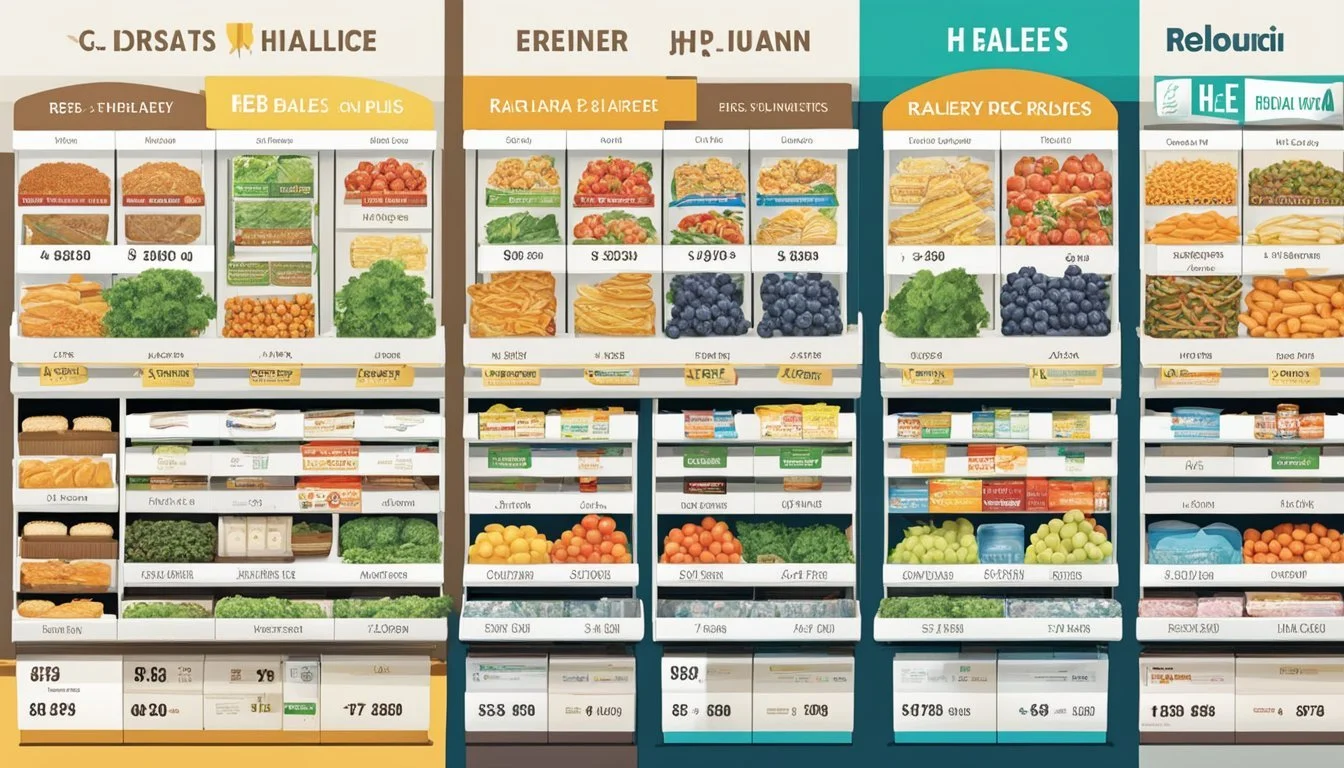Is H-E-B Cheaper Than Raley's?
A price comparison of two popular grocery chains
Grocery shopping can be a significant expense for many households. When it comes to finding the best deals, consumers often compare prices at different supermarkets. H-E-B and Raley's are two popular grocery chains that attract shoppers with their offerings.
While H-E-B generally offers lower prices on many items compared to Raley's, the overall cost difference may vary depending on specific products and locations. H-E-B is known for its competitive pricing strategy, especially on store-brand items. Raley's, on the other hand, tends to focus more on quality and customer service, which can sometimes result in slightly higher prices.
Consumers should consider factors beyond just price when choosing between these two grocery stores. Quality of produce, product selection, and store atmosphere also play important roles in the shopping experience. Both H-E-B and Raley's have loyal customer bases who appreciate their unique strengths in the supermarket industry.
Comparative Analysis of H-E-B and Raley's
H-E-B and Raley's differ in their pricing strategies, product quality, and store brand offerings. These factors impact shoppers' experiences and budgets.
Price Comparison Across Common Items
H-E-B generally offers lower prices on many common grocery items compared to Raley's. A basket of everyday essentials like milk, bread, eggs, and produce often costs less at H-E-B.
H-E-B's focus on efficiency and scale allows them to maintain competitive pricing. The chain frequently runs promotions and discounts to attract budget-conscious shoppers.
Raley's prices tend to be slightly higher, reflecting their emphasis on customer service and local sourcing. However, Raley's loyalty program and weekly specials can help offset some of the price differences for regular customers.
Quality and Variety of Produce and Meat
Both H-E-B and Raley's prioritize fresh, high-quality produce and meat. H-E-B is known for its extensive selection of local and regional fruits and vegetables. The chain works directly with Texas farmers to source fresh produce.
Raley's emphasizes premium meats and seafood. Their butcher counters offer custom cuts and specialty items. The chain also focuses on sustainably sourced seafood options.
H-E-B's meat department features a wide range of cuts and pre-marinated options. Their commitment to local sourcing extends to their meat offerings, with many products coming from Texas ranches.
Store Brands and Organic Offerings
H-E-B's private label products are highly regarded for their quality and value. The chain offers several tiers of store brands, including budget-friendly options and premium lines.
H-E-B's organic selection has expanded significantly in recent years. Their Central Market Organics line covers a wide range of products at competitive prices.
Raley's store brands focus on quality and healthier options. Their Raley's Purely Made line features organic and minimally processed products.
Both chains offer extensive organic produce sections. Raley's emphasizes locally sourced organic options when available. H-E-B's organic produce selection tends to be more extensive and competitively priced.
Cost-Saving Opportunities at H-E-B and Raley's
Both H-E-B and Raley's offer various ways for customers to save money on their grocery purchases. These include regular discounts, loyalty programs, and convenient shopping options.
Discounts and Sale Prices
H-E-B frequently runs weekly specials and promotions on a wide range of products. The store offers digital coupons that customers can load onto their accounts for additional savings.
Raley's also provides weekly ads featuring discounted items. They offer a "Buy One, Get One Free" program on select products, allowing shoppers to stock up on essentials at reduced prices.
Both retailers markdown perishable items nearing their expiration dates, providing opportunities for budget-conscious shoppers to save on fresh produce, meats, and dairy products.
Rewards and Loyalty Programs
H-E-B's Points Club Rewards program allows customers to earn points on purchases, which can be redeemed for discounts on future shopping trips. Members also receive personalized offers based on their shopping habits.
Raley's offers the Something Extra rewards program. Members earn one point for every dollar spent, which can be converted into cash rewards. The program also provides exclusive discounts and personalized deals.
Both loyalty programs are free to join and can lead to significant savings over time for regular shoppers.
Grocery Delivery and Pickup Options
H-E-B provides curbside pickup and home delivery services through its app and website. While these services may incur fees, they can help customers avoid impulse purchases and save time.
Raley's eCart program allows shoppers to order groceries online for curbside pickup. This service is available at many Raley's, Bel Air Market, and Nob Hill Foods locations.
Both retailers occasionally offer promotions on their delivery and pickup services, such as discounted or waived fees for first-time users or during special events.
Understanding the Market Position of H-E-B and Raley's
H-E-B and Raley's are prominent grocery chains with distinct market positions. Their pricing strategies, product offerings, and regional presence shape their competitive standing in the supermarket industry.
Grocery Chains Comparison
H-E-B holds a strong market position in Texas, with a significant presence in major metro areas. As of early 2020, H-E-B commanded a 23.4% market share in Houston, slightly ahead of Walmart's 21.1%.
The retailer has expanded its reach, moving into the Dallas-Fort Worth area with stores in Waxahachie and Corsicana. H-E-B operates multiple banners, including H-E-B plus! and Central Market, catering to diverse customer segments.
Raley's, primarily operating in Northern California and Nevada, has introduced its O-N-E Market concept. This format focuses on organic, natural, and education-driven offerings.
The company began converting existing stores to the O-N-E Market format in 2021, starting with a location in El Dorado Hills, California.
Market Basket Analysis in Metro Areas
H-E-B's market basket strategy involves competitive pricing across a wide range of products. In 2002, the retailer cut prices on 12,000 items overnight, demonstrating its agility in responding to market threats.
Raley's O-N-E Market concept emphasizes curated product selections and health-focused options. This approach targets consumers seeking organic and natural foods in their market baskets.
In broader industry comparisons, Amazon, H-E-B, and Market Basket were ranked as top U.S. grocery retailers in 2021 according to the dunnhumby Retailer Preference Index. This ranking reflects their ability to meet customer needs effectively.
Consumer Considerations Beyond Pricing
When comparing H-E-B and Raley's, shoppers weigh factors beyond just price tags. Store accessibility, customer service quality, and facility layout significantly impact the overall shopping experience.
The Role of Store Location and Accessibility
H-E-B primarily serves Texas and northeastern Mexico, while Raley's operates in California and Nevada. This geographical difference affects consumers' choices based on proximity.
Urban shoppers may find multiple H-E-B locations within a short drive. Rural customers might have fewer options, potentially increasing travel time and fuel costs.
Raley's tends to cluster in suburban areas, catering to families seeking convenient grocery runs. Some locations offer ample parking, a plus for those with larger vehicles.
Store hours vary between chains and individual locations. H-E-B often provides extended hours, benefiting late-night shoppers or shift workers.
Customer Service and Shopping Experience
H-E-B is known for its friendly staff and Texas-centric atmosphere. Employees often assist customers in finding products or carrying groceries to cars.
Raley's emphasizes personalized service, with well-trained staff offering product recommendations and nutrition advice. This approach appeals to health-conscious consumers.
Both chains offer loyalty programs:
H-E-B: Points for fuel discounts
Raley's: Something Extra rewards program
Self-checkout options are available at many locations, reducing wait times for customers with fewer items.
Facility and Store Layout
H-E-B stores typically feature wide aisles and clear signage, making navigation easier for families with strollers or elderly shoppers.
Raley's often incorporates a more upscale ambiance, with specialty departments like artisanal bakeries or wine sections. This layout appeals to customers seeking a curated shopping experience.
Product placement strategies differ:
H-E-B: Emphasis on endcap displays for promotional items
Raley's: Focus on organic and locally-sourced product visibility
Both chains prioritize cleanliness and regular store updates to maintain a pleasant shopping environment. Lighting, temperature, and music are carefully managed to enhance customer comfort.
Impact of Larger Retail Competitors on H-E-B and Raley's
H-E-B and Raley's face significant competition from larger national retailers. These competitors affect pricing strategies, product offerings, and market positioning for both regional chains.
Walmart and Target Market Influence
Walmart's expansion into Texas around 2000 challenged H-E-B's dominance. As of early 2020, H-E-B held a 23.4% market share in Houston, narrowly leading Walmart's 21.1%. This close competition drives both chains to focus on competitive pricing and value offerings.
Target's growth in California impacts Raley's operations. To differentiate, Raley's emphasizes its mission-driven approach and local connections. The retailer launched O-N-E Market as part of its transformation strategy to compete with larger chains.
Albertsons and WinCo also exert pressure in these markets. Their presence forces H-E-B and Raley's to innovate in areas like private label products and store experience.
Whole Foods and Trader Joe's Premium Options
Whole Foods and Trader Joe's influence the premium and natural foods segments. Their popularity pushes H-E-B and Raley's to expand organic and specialty offerings.
H-E-B responded by developing its own upscale Central Market format. This allows them to compete directly for health-conscious and gourmet shoppers.
Raley's O-N-E Market concept targets a similar demographic. It focuses on organic, nutrition-education, and environmentally friendly products to match premium competitors.
Both regional chains must balance their mainstream appeal with these higher-end options. This strategy helps retain customers who might otherwise shop at specialty grocers.
Regional Supermarkets and National Discounters
Regional grocery chains offer unique advantages in competitive markets. They often tailor their strategies to local preferences and maintain strong customer loyalty.
Role of Regional Chains in Saving Strategies
Regional supermarkets like H-E-B, Publix, and Hy-Vee play a crucial role in providing value to shoppers. These chains frequently offer competitive pricing and targeted promotions to attract and retain customers.
H-E-B, based in Texas, consistently ranks as a top grocery retailer. The chain's success stems from its focus on local products and community engagement. Publix, popular in the Southeast, is known for its customer service and BOGO deals.
Hy-Vee, prominent in the Midwest, emphasizes fresh produce and in-store dining options. These regional chains often have more flexibility to adapt to local tastes and economic conditions than national retailers.
Comparison with National Discounters
National discount chains like Aldi and WinCo Foods compete with regional supermarkets on price. Aldi's limited selection and no-frills approach allows for consistently low prices.
WinCo Foods operates employee-owned stores with a focus on bulk items and low overhead. This model enables them to offer competitive prices on many products.
Regional chains counter with a wider selection, including more local and specialty items. H-E-B's Central Market and Joe V's Smart Shop concepts demonstrate how regional chains can target different market segments.
Harris Teeter, popular in the Mid-Atlantic, competes by offering a more upscale shopping experience. FoodMaxx, a discount chain in California, provides another regional alternative to national discounters.
Technology and Convenience in Shopping
Modern grocery stores leverage technology to enhance the shopping experience. Digital tools and automated systems streamline processes, saving time and effort for customers.
The Role of Grocery Apps and Digital Services
H-E-B's mobile app offers a range of features to simplify shopping. Users can create accounts with a username, password, and email address. The app allows customers to browse products, build shopping lists, and access digital coupons. For added security, two-factor authentication is available.
H-E-B partners with Instacart for home delivery services. This collaboration expands their digital reach, providing customers with convenient options for online ordering and fast delivery.
The H-E-B app also includes a barcode scanner. Shoppers can quickly check prices and product information in-store. Digital loyalty programs track purchases and offer personalized deals based on shopping habits.
Self-Checkout and Automation Trends
Self-checkout kiosks are becoming increasingly common in grocery stores. These stations allow customers to scan and pay for items without cashier assistance. H-E-B has implemented self-checkout options in many locations to reduce wait times and enhance convenience.
Some H-E-B stores feature "scan and go" technology. Customers use handheld devices or their smartphones to scan items as they shop. This system eliminates the need to unload carts at checkout, further speeding up the process.
Automated inventory management systems help ensure product availability. These systems track stock levels in real-time, triggering reorders when supplies run low. This technology minimizes out-of-stock situations, improving the shopping experience for customers.
Comparing Groceries and General Merchandise
H-E-B and Raley's offer diverse product selections, from fresh produce to household essentials. Their pricing strategies and inventory differ across various categories, impacting overall shopping costs.
Warehouse Clubs and Supermarkets
Warehouse clubs like Costco and Sam's Club often provide lower per-unit prices on groceries and general merchandise compared to traditional supermarkets. H-E-B and Raley's compete with these clubs by offering their own bulk-buying options and store-brand alternatives.
H-E-B's private label products frequently match or beat the prices of warehouse clubs on common grocery items. Raley's also emphasizes value through its private brands, though its selection may be more limited than H-E-B's.
In general merchandise, both H-E-B and Raley's stock everyday items but cannot match the extensive range found at warehouse clubs. H-E-B typically offers more competitive prices on non-food items than Raley's.
Researchers have found that shoppers who mix trips between supermarkets and warehouse clubs often achieve the best overall savings. This strategy allows customers to leverage the strengths of each store type.
Expert Reviews and Consumer Ratings
Expert evaluations and shopper feedback provide valuable insights into H-E-B's pricing compared to Raley's. These sources offer data-driven comparisons and real-world experiences to help consumers make informed decisions.
Consumerpedia Podcast Insights
The Consumerpedia Podcast, known for its in-depth retail analysis, conducted a price comparison study between H-E-B and Raley's. Researchers collected data on over 100 common grocery items across multiple store locations. Their findings revealed that H-E-B offered lower prices on 62% of the products surveyed. The podcast highlighted H-E-B's competitive pricing strategy, especially on store-brand items. However, Raley's scored higher in specialty and organic product selections.
Online Consumer Ratings and Reviews
Consumer ratings on popular review platforms show mixed results when comparing H-E-B and Raley's prices. H-E-B received an average rating of 4.3 out of 5 stars for affordability, while Raley's scored 3.8 stars. Many reviewers praised H-E-B's:
Frequent sales and promotions
Competitive pricing on fresh produce
Value-priced store brand options
Raley's garnered positive feedback for:
Loyalty program discounts
Competitive prices on specialty items
Weekly deals on select products
Customer reviews emphasized that price differences varied by product category and location.

